HOW TO 4WD IN THE MAZDA BT-50
HOW TO 4WD IN THE MAZDA BT-50
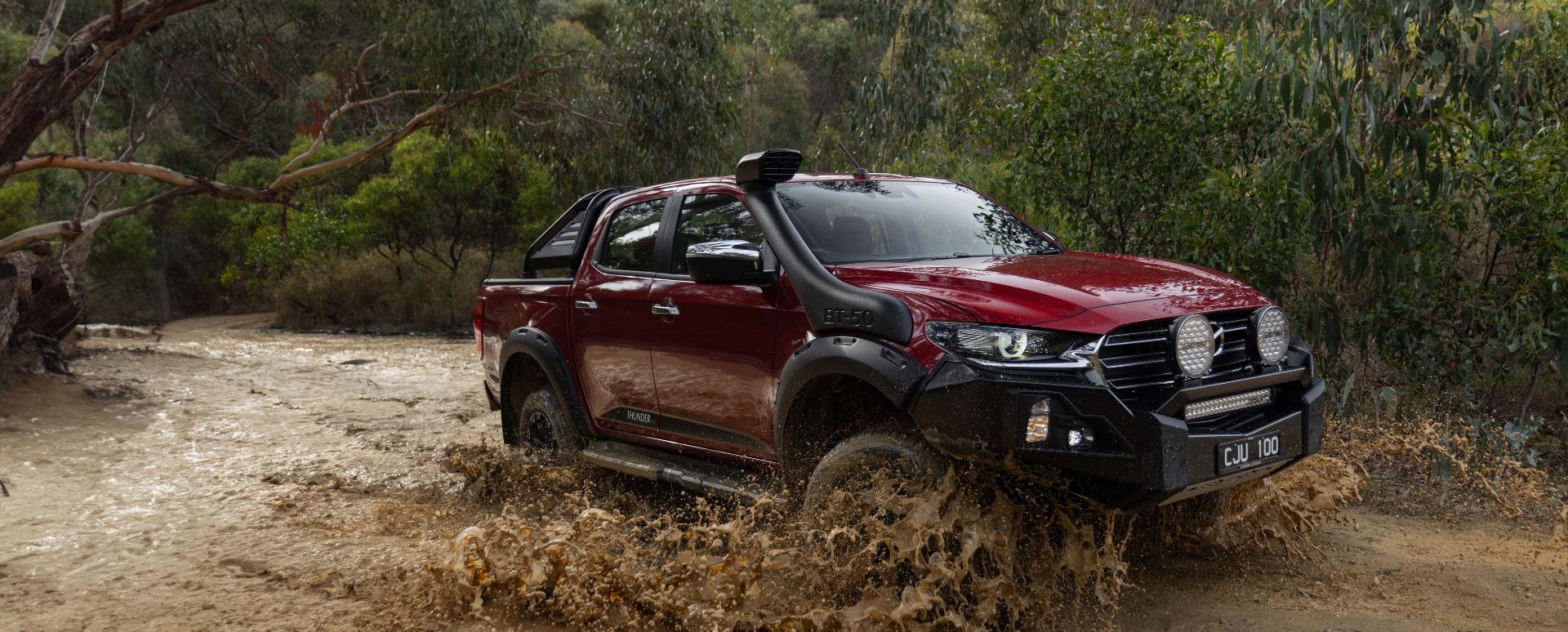
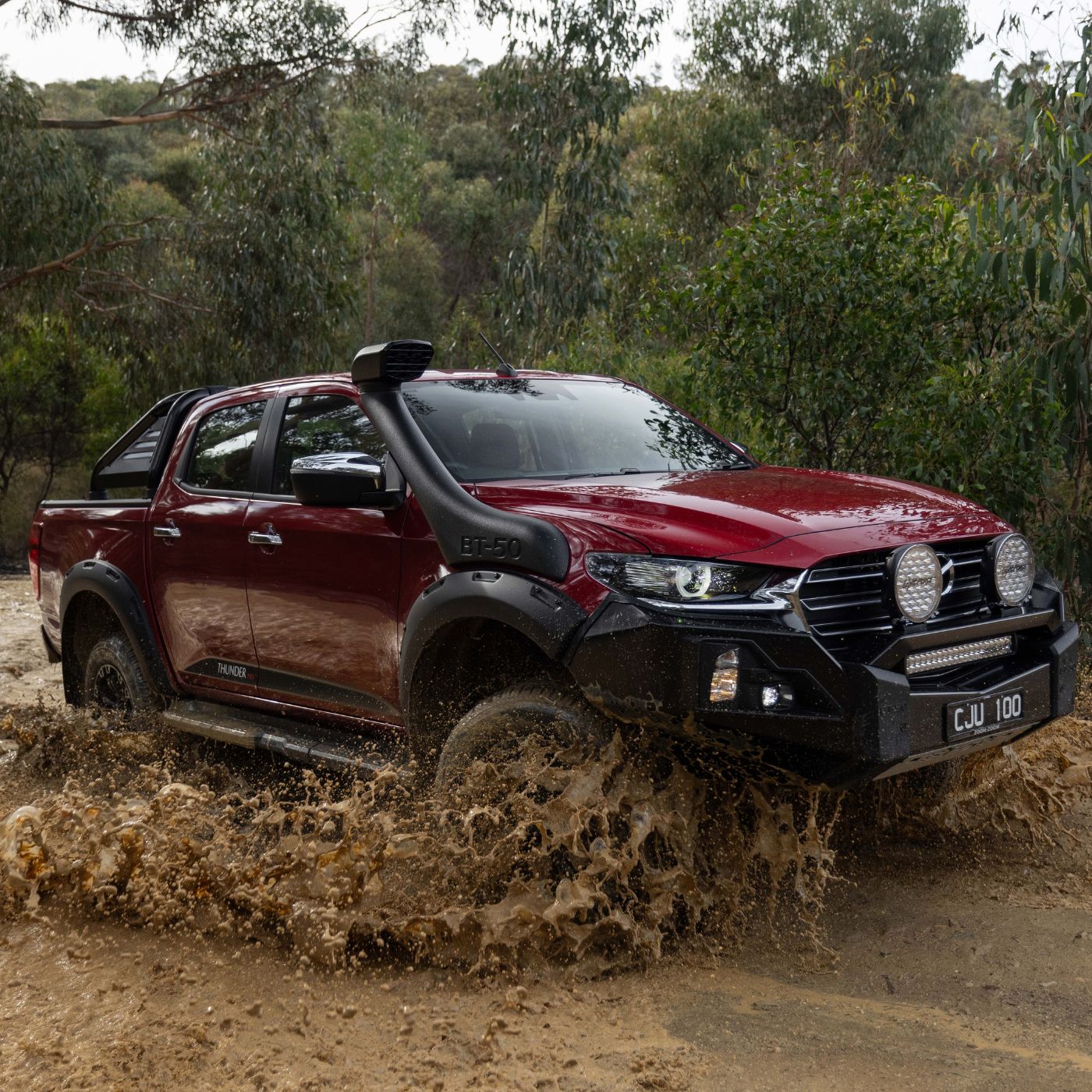
Whether it’s on-site, on the open road or off-road, the Mazda BT-50 is the complete weekday and weekend package. When it comes to getting through the rough stuff, the 4x4 BT-50’s advanced off-road capabilities are well developed and proven, making weekend adventures fun and challenging work sites easier to navigate.
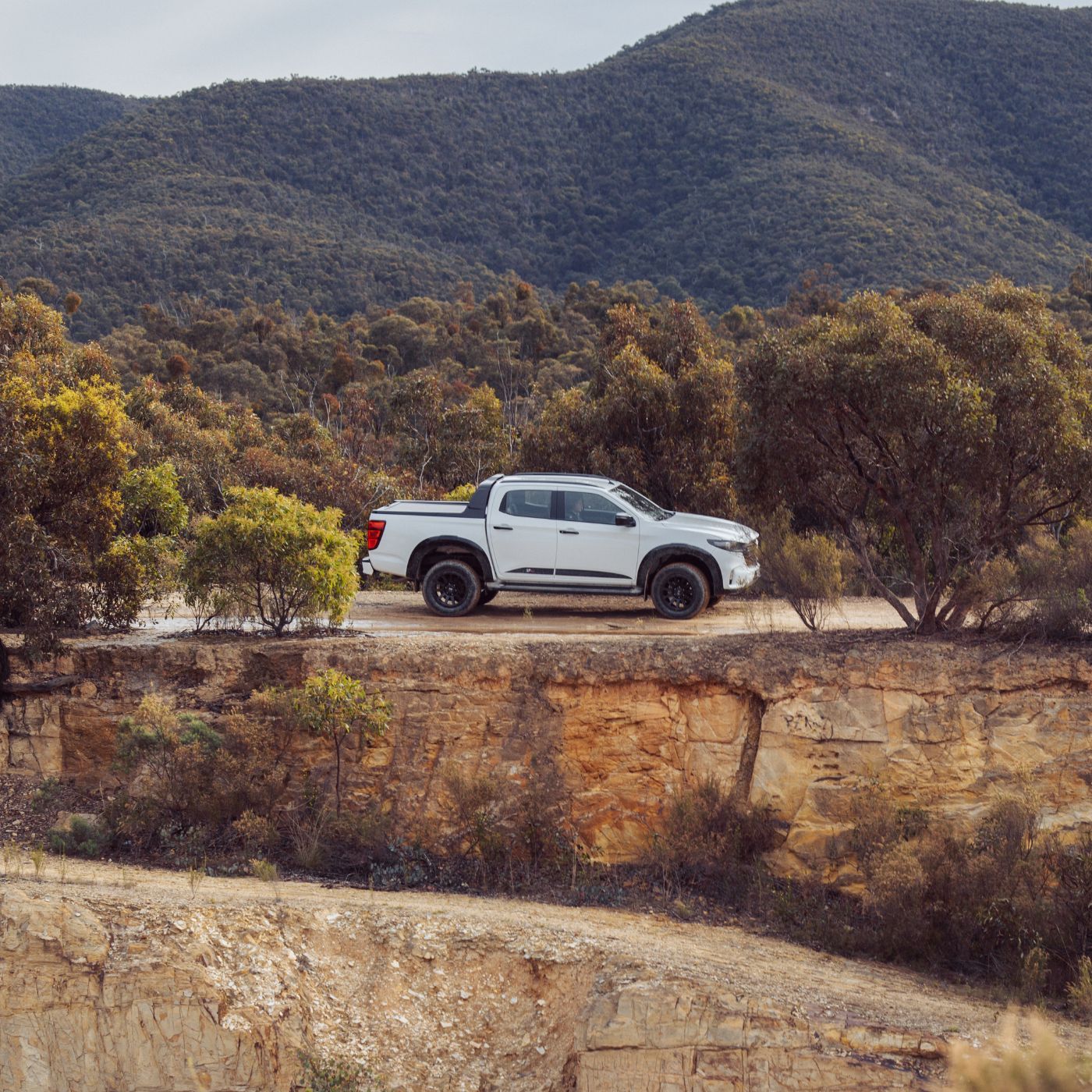
4x4 FOR EVERYONE
The Mazda BT-50 4x4 model range makes off-road driving simple and enjoyable, helping you cover even the toughest terrain.
FREQUENTLY ASKED QUESTIONS
What do “4WD” and “4x4” mean?
In short, they refer to the same thing and are typically used interchangeably.
“4x4” refers to a four-wheeled vehicle where all four wheels receive drive torque from the engine. (“4x2”, therefore, denotes a four-wheeled vehicle where only two wheels are driven.)
“4WD” is an acronym for “Four-Wheel Drive”.
Four-Wheel Drive is often used where extra driving traction is needed in difficult and slippery driving conditions and is often found in pickup / cab-chassis vehicles such as the Mazda BT-50, and in Sport Utility Vehicles (SUVs) such as the Mazda CX-90.
What is the benefit of 4WD?
Four-Wheel Drive offers improved traction when driving in rough and slippery conditions, such as mud, snow, ice, rocks and steep terrain.
Having the benefit of this enhanced traction means you can take your Mazda BT-50 into all the places you need, from challenging work sites to a variety of off-road environments for adventure-based fun.
How does the 4x4 system in the Mazda BT-50 work?
The four-wheel drive system in the 4x4 Mazda BT-50 model range uses a dual-range transfer case for serious off-road driving capability in rugged terrain.
This transfer case is effectively a second gearbox. It’s connected to the BT-50’s primary gearbox, which is available either in a six-speed manual or six-speed automatic format.
The 4x4 BT-50’s dual-range transfer case – which offers high-range 4WD and low-range 4WD modes – controls the amount of engine torque sent to the wheels. High-range 4WD (shown as 4H on the 4WD rotary switch on the BT-50’s instrument panel) engages a specific set of gear ratios for driving on certain road surfaces. Low-range 4WD (shown as 4L) uses a lower ratio for even greater traction and climbing / descending abilities in more challenging terrain.
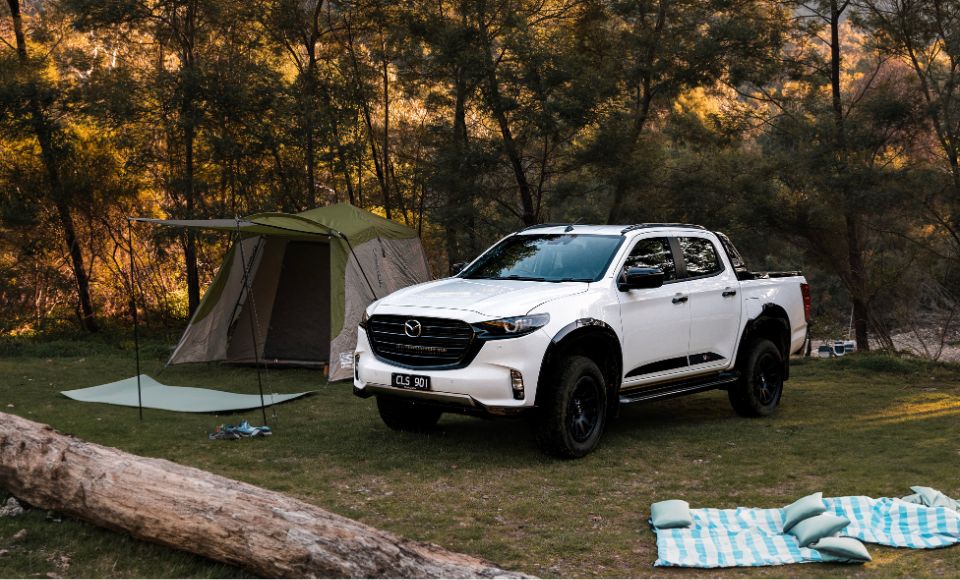
What is 2 High (2H) and when should I use it?
In the 4x4 BT-50, 2H is the standard driving mode and it’s referred to as “high-range 2WD”.
2H sends drive to the rear wheels only. Use 2H during normal everyday driving conditions on ordinary roads or highways.
What is 4 High (4H) and when should I use it?
In the 4x4 BT-50, 4H is the 4WD mode referred to as “high-range 4WD”.
4H is suitable for gravel roads, snow-covered roads, icy roads, and other roads where you need more traction than 2WD.
What is 4 Low (4L) and when do I need it?
In the 4x4 BT-50, 4L is the 4WD mode referred to as “low-range 4WD”.
4L is suitable for steep slopes, rough roads, sand, mud, or deep snow, and other roads where you need significant low-speed traction.
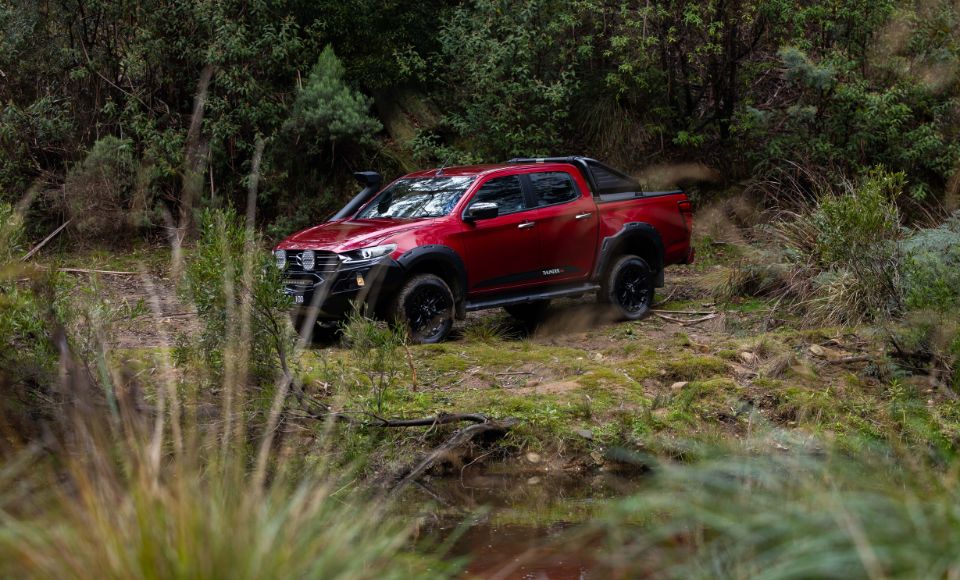
How do I operate the 4x4 system in the Mazda BT-50?
It’s simple.
The 4WD rotary switch on the centre console lets you control the BT-50’s 4WD system.
1. Choose the driving mode you need:
There are three driving modes available:
- 2H (or 2-wheel drive) sends drive to the rear wheels. Use 2H during normal driving on ordinary roads or highways
- 4H (or high-range 4-wheel drive) is suitable for gravel roads, snow-covered roads, icy roads, and other roads where you need more traction than 2WD
- 4L (or low-range 4-wheel drive) is suitable for steep slopes, rough roads, sand, mud, or deep snow, and other roads where you need significant traction
2. When switching from 2H to 4H: Keep the BT-50 driving in a straight line and below 100 km/h. Move the switch from 2H to 4H. The 4WD indicator light will flash in the instrument cluster. It will stop flashing and stay illuminated when 4H has engaged.
Moving from 4H back to 2H: Simply follow the same process. The 4WD light will flash until 2H is engaged and will no longer illuminate.
3. Switching between 4H and 4L: Before moving from 4H to 4L (and back again), make sure:
- The vehicle is stationary
- Engine speed is less than 2,000 rpm
- In the 6-speed manual BT-50, the clutch pedal is depressed or the gearbox is in neutral (N)
- In the 6-speed automatic BT-50, the gear selector is in neutral (N)
Then push and turn the switch from 4H to 4L. The 4WD indicator light will flash in the instrument cluster and then stay illuminated when 4L has engaged. You will also see the following lights will illuminate in the instrument cluster:
- DSC (Dynamic Stability Control) warning light
- DSC OFF (Dynamic Stability Control Off) indicator light
- TCS OFF (Traction Control System Off) indicator light
Repeat these steps when moving from 4L back to 4H.
All 4x4 Mazda BT-50 models feature a handy guide on the driver’s sun visor to remind the driver of the steps above.
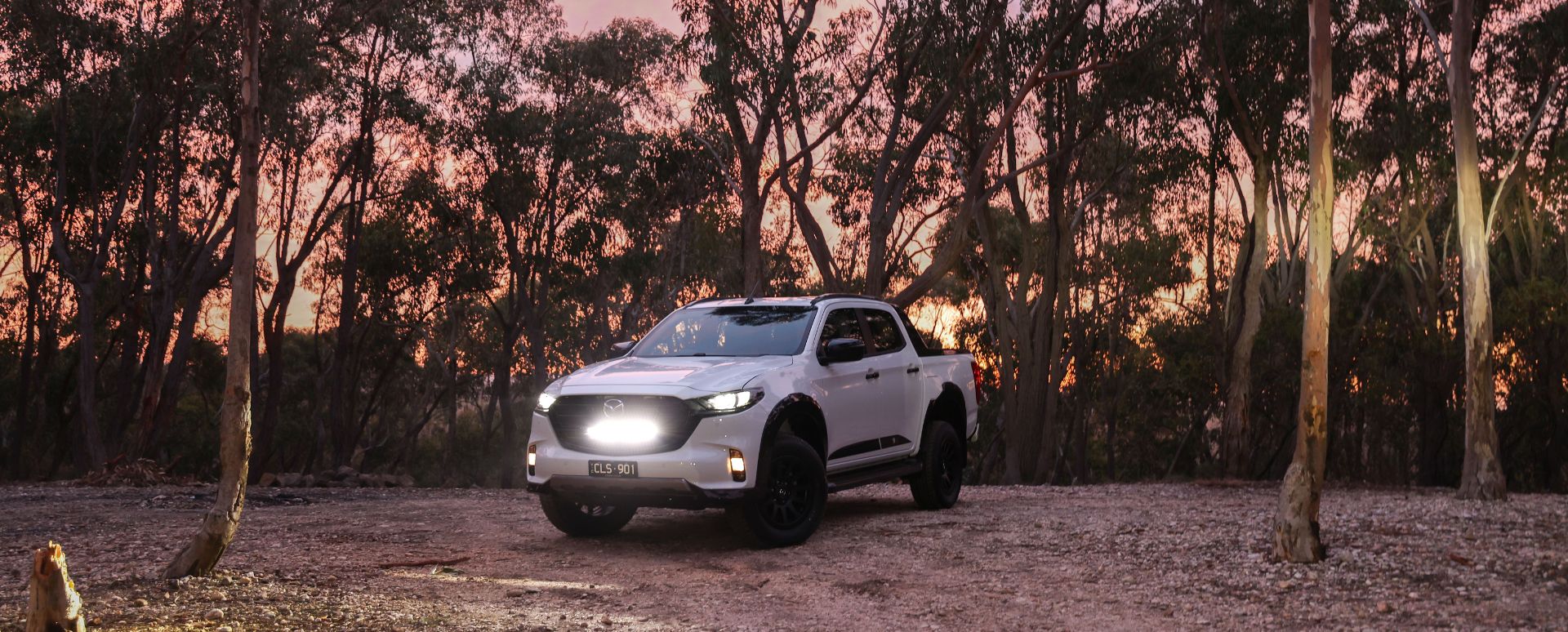
Why is there a locking diff button and what does it do?
In the 4x4 Mazda BT-50, the Rear Differential Lock Switch is located either next to the gear selector lever (automatic transmission) or just in front of the gear shift lever (manual transmission).
The purpose of the rear differential lock is to maximise driving traction in difficult off-road conditions. It does this by ensuring both rear wheels turn at the same rate and applying equal amounts of drive torque to each of them during slow-speed off-road driving. This reduces the risk of spinning a single wheel and losing traction.
To operate the rear differential lock in the BT-50: Press the Rear Differential Lock Switch to engage the rear differential lock. The rear differential lock indicator light will appear in the instrument cluster. It will go out when the rear differential lock is disengaged.
Before engaging the rear differential lock, make sure:
- Your BT-50’s vehicle speed is less than 8 km/h
- The 4WD switch is set to 4L
When the rear differential lock is engaged, the following functions do not operate in the BT-50:
- Anti-lock brake system (ABS)
- Dynamic stability control (DSC)
- Traction control system
- Hill launch assist
- Hill descent control
At the same time, the following indicator and warning lights will appear:
- ABS (Anti-lock Braking) warning light
- DSC (Dynamic Stability Control) warning light
- TCS OFF (Traction Control System Off) indicator light
- DSC OFF (Dynamic Stability Control) indicator light
When the BT-50’s speed is more than approximately 30 km/h the rear differential local will automatically disengage.
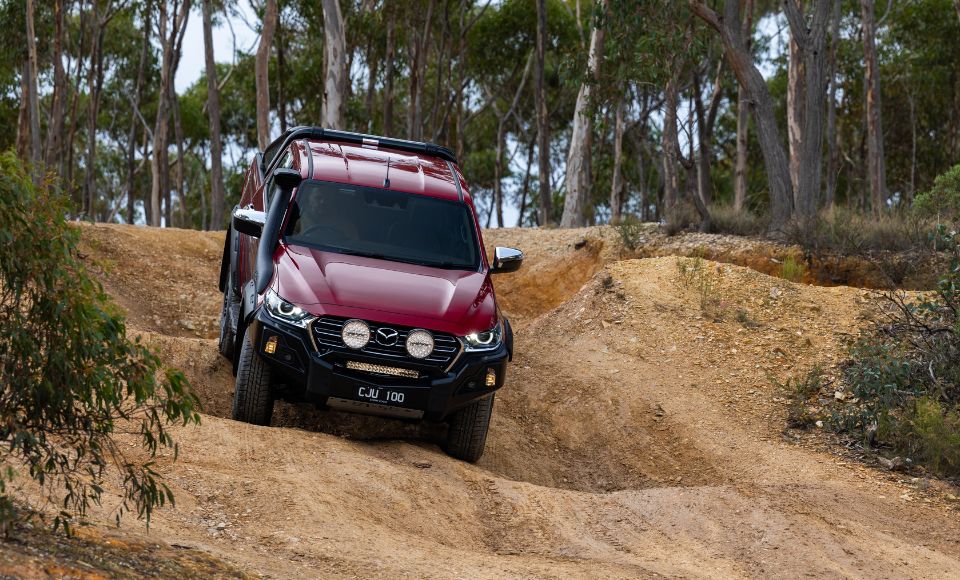
What are ramp-over, approach and departure angles?
A ramp-over angle (also called a breakover angle) is the angle between the BT-50’s tyres and the centre of its undercarriage. A sufficient ramp-over angle lets you more easily navigate off-road obstacles. The 4x4 BT-50 offers ramp-over angles of between 23.3 degrees and 24.3 degrees, depending on the model variant.
A vehicle’s approach angle is the angle between the lowest-mounted component at the front of your vehicle and the contact patch of its front tyres. This angle helps you determine the size and shape of off-road obstacles you can drive over without them touching the lowest component on the front of your vehicle.
The 4x4 Mazda BT-50 model ranges offers approach angles of between 25.8 degrees and 30.4 degrees, depending on the model variant chosen.
A vehicle’s departure angle is simply the same as its approach angle but applied to the rear of the vehicle. It is the angle between its lowest-mounted rear component (such as its rear bumper or tow bar) and its rear tyres.
The 4x4 Mazda BT-50 model ranges offers departure angles of between 23.9 degrees and 25.6 degrees, depending on the model variant chosen.
What is a wading depth?
Wading depth refers to the maximum depth of water a vehicle can drive through without causing damage to its components, especially its mechanical, electrical and safety systems.
Wading depth is usually expressed in millimeters by the vehicle’s manufacturer. Exceeding the maximum wading depth can cause water to enter critical components, such as the engine and transmission, which can cause damage and create risk when driving.
Driving through any body of water in a moving vehicle requires planning and careful driving operation.
The Mazda BT-50 model range has a maximum wading depth of 800 mm.
Why and when you should let your tyre pressures down when off-road driving?
Lowering a 4WD vehicle’s tyre pressures during off-road driving in particular terrain conditions can have certain benefits.
Lower tyre pressures can increase the tyres’ contact patch area with the ground, offering increased traction.
The tyres’ increased contact patch areas can distribute the vehicle’s weight over a slightly larger area, making your tyres more effective when driving on surfaces such as sand and mud.
Decreased tyre pressures also allow the sidewalls of the tyres to flex a little more, which lets them conform to the shapes of obstacles such as rocks, making it easier to slowly drive over them and even reduce their risk of puncture.
Lower tyre pressures can also help absorb bumps and irregularities during off-road driving, helping achieve a smoother ride in slow-going rough 4x4 terrain.
It’s important to adapt your driving style to the terrain you’re crossing, especially when driving off-road with reduced tyre pressures. Be sure to drive slowly, avoid sharp turns and approach obstacles with caution and care.
If you slightly reduce the air pressure in your BT-50’s tyres for off-road driving, always ensure they are reinflated to their correct air pressure levels for all other driving conditions.

When should I use Hill Descent Control?
During off-road driving, Hill Descent Control (HDC) works by controlling the BT-50’s braking system to assist driving down steep and slippery terrain in a controlled manner.
HDC is fitted across the Mazda BT-50 model range in Australia.
To operate Hill Descent Control (HDC) in the Mazda BT-50:
1. Activate HDC: The HDC switch is located either next to the gear selector lever (automatic transmission) or just in front of the gear shift lever (manual transmission). Press this button to activate HDC and deactivate HDC during off-road driving.
When HDC is activated, the hill descent control indicator light located in the instrument panel will illuminate.
2. Engage a suitable gear:
Manual transmission models: place the gearshift lever in a position other than "N" and drive the vehicle (1st gear or 2nd gear or Reverse are recommended).
Automatic transmission models: place the selector lever in a position other than "P" or "N" and drive the vehicle (D or R are recommended).
Please note: HDC will operate during these driving conditions:
- You’re driving your BT-50 on a steep slope
- The BT-50 is travelling between a very low speed and approximately 30 km/h
- The accelerator pedal is not pressed
When driving with HDC activated, the BT-50’s brake lights will operate. You can press the brake pedal to reduce your speed and use the accelerator to increase your speed. HDC will automatically deactivate when your BT-50’s speed goes beyond approximately 50 km/h.
To deactivate HDC simply press the HDC switch.
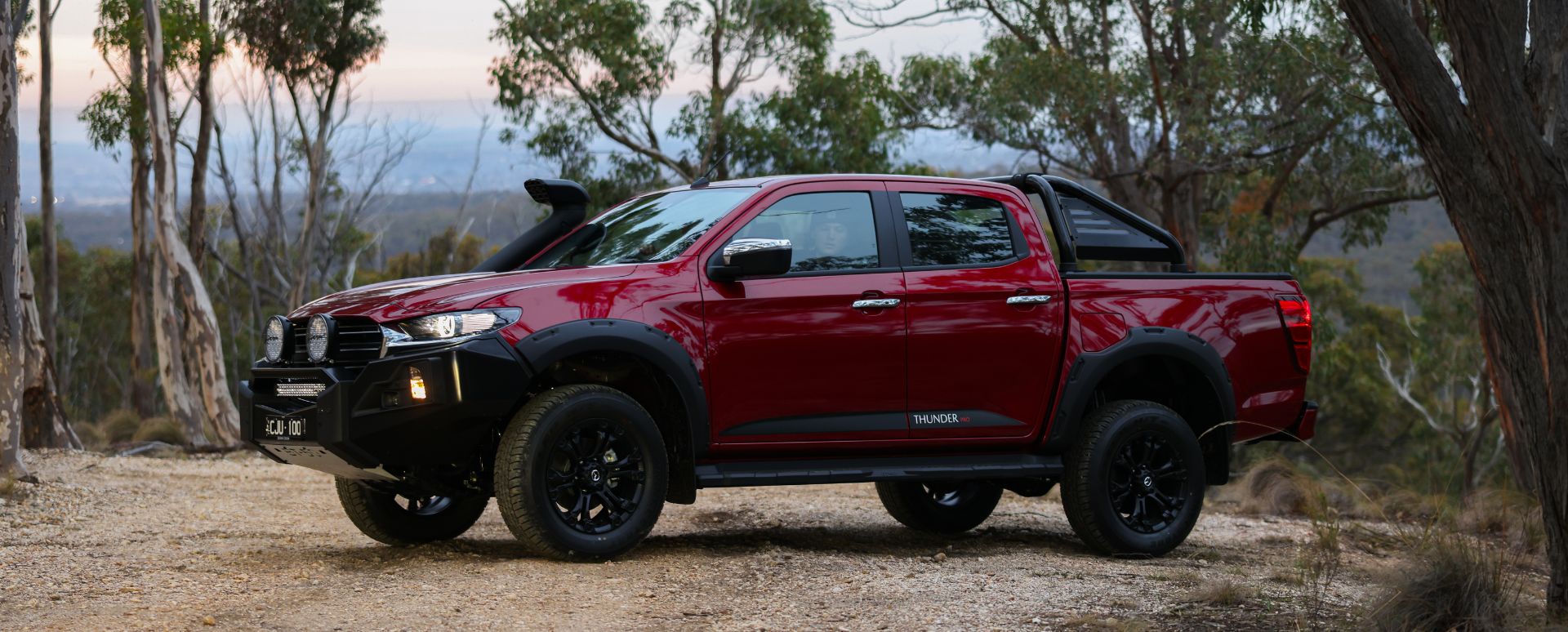
The Mazda BT-50 range includes a number of 4x4 model variants, each of them ideal for a variety of needs and lifestyles. Your local authorised Mazda dealership or Dedicated Mazda Ute Centre can help you choose the right 4x4 BT-50 pickup or cab-chassis model that best suits you and your needs.
Learn More about the Mazda BT-50